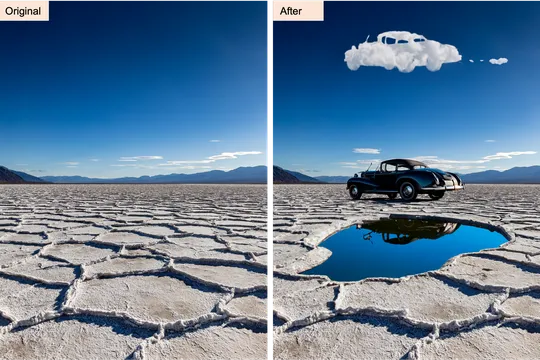Adobe employees are concerned the software giant’s new text-prompt generative AI tool may cannibalise its customers, by causing job losses in the creative industries that support Adobe.

Private discussions on AI ethics in a Slack channel dedicated to the subject were leaked to Business Insider, with the media outlet stating ‘there’s a debate raging over new AI technology that threatens to kill jobs among a key group of customers’.
Adobe recently announced a new AI Generative Fill tool, named Firefly, that uses text prompts to create images. It generate unique original images, or be used for ‘outpainting’ to expand an image beyond its borders with matching elements.
A senior designer supposedly noted that a billboard and advertising business he’s aware of plans to cut jobs in the graphic design team by utilising generative AI tools, such as Adobe Firefly. ‘Is this what we [Adobe] want?’
The article states that by jumping into the AI race, Adobe has put itself in a ‘tricky position’, as it relies of graphic designers as customers, and its new technology is ‘so potent’ that it might put some designers out of work.
An Adobe employee describes the rise of generative AI technology as ‘depressing’ and an ‘existential crises’ for graphic designers. Someone states that artists feel like they’re ‘slaves’ to the AI algorithms with their jobs soon amounting to touching up AI-generated work.
Although an optimist in the Slack channel views AI technology positively, stating it will increase efficiency and stands to benefit freelancers and hobbyists, despite acknowledging a possible workforce reduction.
‘I don’t think we should feel guilty for providing better and faster tools, as long as it’s done ethically,’ that person wrote in the Slack channel.

Adobe is in a position to be at the forefront of ethical and responsible generative AI. Firstly, it has the resources to build and train a powerful AI system; and secondly its participation in the Content Authenticity Initiative (CAI) gears Adobe to add certification to any imagery that uses AI renderings. Adobe states Firefly was trained on its own stock library – ‘openly licensed content’ – and public domain content that’s no longer protected by copyright. Whereas it’s highly likely that competitors trained their AI using images without authorisation from copyright holders.
Inside Imaging speculated whether Adobe was in danger of cannibalisation when it unveiled Firefly. Here’s an excerpt from that coverage:
By embracing the non-human creator, Adobe may be in danger of cannibalisation. There is concern that AI image generators will impact the careers of professional photographers and graphic designers, who make up a large portion of Adobe’s customers.
If these professionals are replaced by AI image systems, they’ll have no need to pay for a Creative Cloud subscription.
Although director of digital media and strategy for Adobe Asia-Pacific, Chandra Sinnathamby, said Generative Fill will help creators, not hinder their future viability.
‘The whole idea is: how do we help that creative accelerate, and that content creation at scale, with precision and speed?’ he said. ‘Most campaigns you have to collaborate with various different things. So we how do we accelerate that collaboration process?’
Adobe highlights its history of introducing groundbreaking new tools that disrupts creative industries but ultimately improves productivity. However an employee in the Adobe slack channel feels generative AI is different from previous technology revolutions.
Even after technology went digital, photographers still require skill and expertise to produce quality work, the employee said. In contrast generating AI images requires almost no skill. Just simple text prompts. This means the ‘craft and expertise that can only be gained through continued practice and personal creativity’ may be lost.
‘The “slot coin operator” model of creativity is not a world I want to live in, randomly cycling outputs from a plethora of mashed together concepts,’ another person wrote. ‘Personally I wish Adobe had not gone down the path of releasing pure text 2 image and had continued to focus exclusively on tools that empower artists to create.’
Another technological revolution cited by the employee is the introduction of cameras, which allowed operators to create photos that looked nothing like paintings. AI, on the other hand, competes with existing human-created digital graphics.
‘It does not innovate in the way a camera does in that it replaces people in the mediums that it draws data from instead of opening up new means of expression,’ one of the people wrote.
Generative AI is still in its infancy. No one can yet say for sure how it will impact creative industries. It’s at least nice to know some humans at Adobe share the concerns felt by many others in society.





Be First to Comment